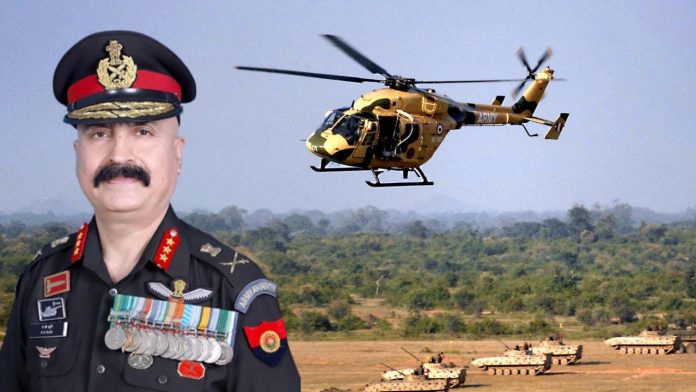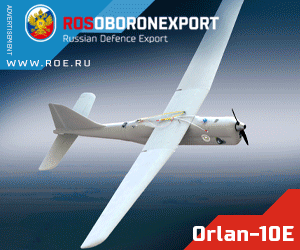By Aritra Banerjee
The military maintenance, repair and overhaul (MRO) ecosystem is still in its infancy in India. However, the emergence of numerous private sector players of varying scales has shown promise. The Indian Army has fostered conducive policies to bolster its MRO capacities and increase its helicopter fleet’s operational efficiency. This has given steam to the nation’s military MRO ecosystem, particularly for rotary wing aircraft, which the Army Aviation Corps (AAC) operates. As the Indian Army is projected to increase its helicopter fleet to an estimated 700 by the next decade, its need for robust MRO facilities and services is sowing the seeds for the sector. According to industry leaders, too, this sector’s time to shine has come.
Speaking at Aero MRO India 2022, an industry forum which IADB had partnered with, Lieutenant General Ajay Kumar Suri, Director General, Army Aviation Corps, shared a candid take on what the army needs and how the Indian industry can collaborate.
The DG AAC told those in attendance, “Generally, we restrict MRO to the fixed-wing aircraft, but that is not the case. We have both fixed-wing and rotary-wing fleets in our country, so we need to concentrate on both these aspects. Along with the aircraft, you have the line components, engines, airframes etc., but there is also a requirement to focus on ground support and ground handling of equipment, and the growth in the civil and defence industry is going to propel all these items which are going to be produced in larger numbers, and we need to repair them, service them and also manufacture them.”
He highlighted that the Indian Army has been able to establish MRO hubs in collaboration with Hindustan Aeronautics Limited (HAL) in army aviation. Although these hubs are presently not fully functional and need to be boosted, their presence itself is of great importance. Lt Gen. Suri further elaborated on the Indian Army’s approach towards these hubs. The Service is allowing these spaces to be utilised such that anyone who wants to set up shop here is enabled to do so. From something as small as Night Vision Goggles (NVG) and repair of the guns on helicopters to a venture as large as the MRO of engines or ground support equipment. The Organisation’s primary requirement from such businesses is that they must get into collaboration with HAL or AAC directly. “The Indian Army today is very forthcoming; it is not how people used to think that the Army and the Armed Forces are a different league. Today we meet people, and anyone who wishes to engage with the Army, we are more than welcome,” he said.
In the long-term, small setups can be readied such that in times to come, MRO hubs can be established. “If we were to have an MRO hub in every region,” he added, “then that is the answer as far as military aviation is confirmed.”
Lt Gen. Suri underscored the need to improve turnaround time and offered a way forward as well. He pointed out that the advantages that will accrue to the Indian Army are tremendous. His focus when illustrating this was bent on the turnaround time. In the absence of regional MRO centres, the Army’s helicopters have to go across the country for any significant servicing. “Today, we have helicopters which we have to send to Banglore from a place like Leh. If I have to get it overhauled for a major servicing, it flies down from there, goes to Bangalore, and spends a year there! Gets overhauled and then flies back.” He said that if the facilities were regionally based, for instance, somewhere up north in Jammu or Srinagar, with people ready to service the aircraft there in two to three months’ time, it would prove to be immensely advantageous–saving cost, time, and effort.
The DG AAC stressed on the numbers to illustrate the immense growth potential of the market size. With the Indian Army currently operating 400 choppers, and poised to have around 700 in the upcoming 8-10 years, there is a stark need to increase MRO capacities to cater to the demand over the decade.
He then addressed the headstart India had in terms of human resources. He spoke at length about the opportunities that exist for veterans in this arena. “We have a tremendous amount of trained manpower! There are large numbers of people who leave the services at 35-40 years of age. I am talking about both soldiers and officers; these people have extensively served in varied terrain during their time in the armed forces; they have the expertise and knowledge. These are the people we could employ, and that is how the MRO hubs and the entire gambit of MRO will witness a sea of change in the years to come,” Lt Gen. Suri said.
Teething Issues, Opportunities & Industry Future
Civil-military collaboration in MRO however currently faces significant roadblocks. The DG AAC highlighted that there is a considerable disconnect, rather than a lack of cross-pollination and understanding, between defence and civil sectors in this regard. “Overall as a concept, the Armed Forces are working one way while the civil industry is working in another, and half the time, we do not know what the other is doing. A lack of information and knowledge amounts to this.”
He further said that it is only during major trade shows like DefExpo and AeroIndia that there is an exchange of views across stakeholders, but policy constraints from both the industry and the armed forces lead to bottlenecks.
He was of the view that manufacturers should stick to their core competency and let MRO be handled by the industry players in that sector. “Somehow, manufacturers want to get hook, line and sinker into MRO, which is not a very good thing to do. When I want to make something, I must make it and leave it and let somebody else handle the MRO part,” he explained.
Speaking about the growth potential of the Indian military MRO industry, Lt Gen. Suri said, “today, we are starting with components and airframes; engines are a tough call, but I am sure 20-30 years down the line, people will be able to hack it, and we will be doing an overhaul of engines for our country and maybe even for other countries because of the simple reason that India would be a cheaper country to do any such thing than any other country.”
The induction of the Apache Attack helicopters is slated to set the stage to bolster the Indian Army’s MRO ecosystem and offer opportunities in the sector. The General told the industry to pitch in and develop a MRO roadmap for aircraft delivered by foreign OEMs.
The AAC is opening its doors to the MRO industry and is offering its support at its locations. “As I said earlier, we are welcoming people, we will give you hangar space, we will give you everything and all those are located within the premises of army aviation bases,” Lt Gen. Suri said before signing off.
Lt Gen. Suri assumed the appointment of DG and Colonel Commandant of AAC on 18 June 2021. The General is an alumnus of the Saint Edwards School, Shimla. He joined the National Defence Academy (NDA) in 1981, was commissioned into the Indian Army’s 194 Field Regiment in June 1985 and was awarded the flying badge in 1990. He clocked over 6,000 flying hours and has flown Cheetah, Chetak, Advanced Light Helicopter (ALH), and ALH Weapons System Integrated (WSI) in all types of terrain.



